Pinned Box Joints
Interlocking joinery adds visual interest and mechanical strength to a box or carcase.
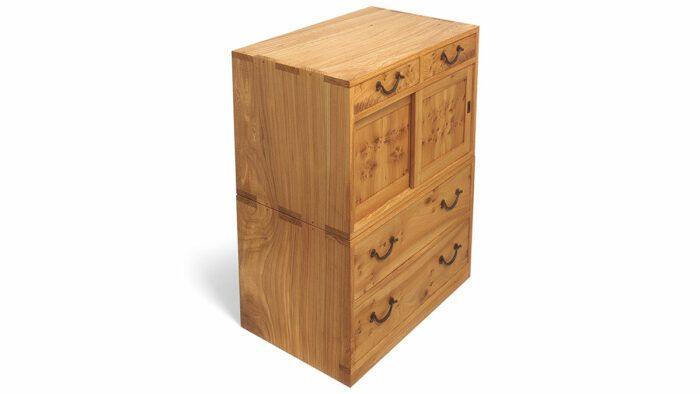
Synopsis: A large part of furniture making boils down to joining pieces of wood to make boxes. A box joint is a simple alternative to the dovetail. It’s appropriate for small-scale or large projects, and is commonly seen in Japanese and Craftsman styles of furniture. To increase mechanical strength, Seth Janofsky pins the joints in some projects he builds. He offers options for each step, which leaves lots of room for personal preference.
Boxes are the essential structure of all case pieces. That means a large part of furniture making boils down to joining pieces of wood to make boxes. There are many ways of doing this. Some, such as dovetails, draw attention to the joinery and the box structure itself, while others, such as post-and-panel construction, hide those aspects.
Enter the box joint, a close cousin of the dovetail that also becomes part of the overall look of a piece. Like the dovetail, the box joint is a way of solidly joining two planks or panels of solid wood end-to-end, appropriate for anything from jewelry boxes to full-size cabinet components. In essence, the box joint involves making a number of interlocking fingers on the ends of the pieces to be joined. The more well-known variety of the box joint, which I call a finger joint, has many small interlocking fingers. The fingers provide plenty of long-grain-to-long-grain gluing surface. The version I introduce here, however, has relatively broad fingers and must be pinned to add mechanical strength.
Variations on the pinned box joint
The pinned box joint is common in some traditional types of furniture, such as Japanese solid-carcase construction (tansu) and also the Craftsman work it inspired in this country, most notably that of Charles and Henry Greene. The pinned box joint also can be used to give an Asian flavor to contemporary work. There are a couple of attractive variations on this joint. One is a dovetailed version, which also is seen in tansu furniture. Another is the Greene-and-Greene version, which has longer fingers that protrude slightly.
To me, the pinned box joint, with its large fingers, is most suitable for large boxes and full-size carcases such as blanket chests. I think of finger joints as being more appropriate for small boxes, trays, and the like.
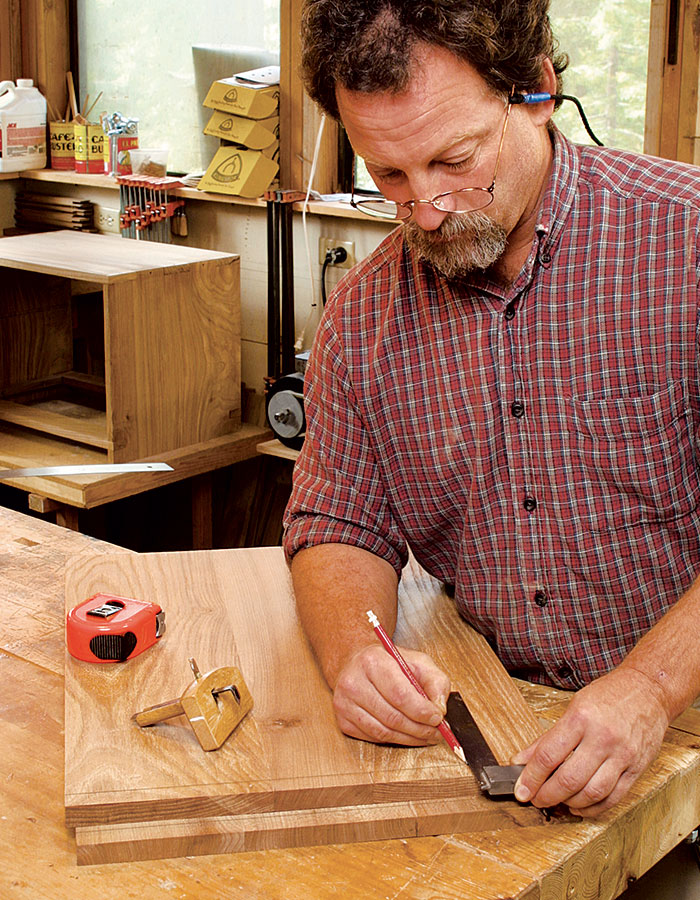
Photos: Asa Christiana.
Drawings: Michael Gellatly.
From Fine Woodworking #168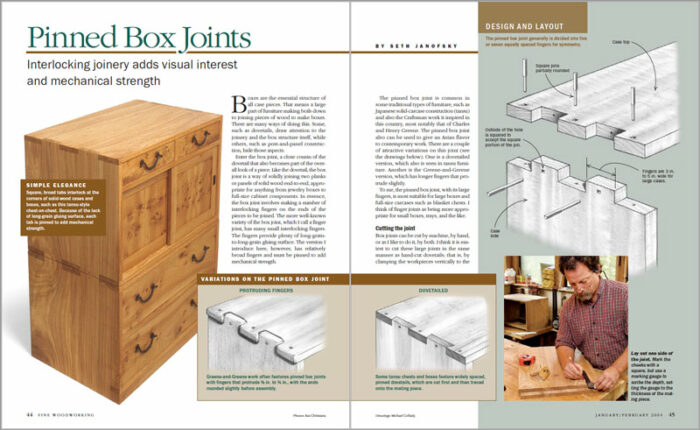
For the full article, download the PDF below.
Fine Woodworking Recommended Products

Suizan Japanese Pull Saw

Marking knife: Hock Double-Bevel Violin Knife, 3/4 in.

Olfa Knife

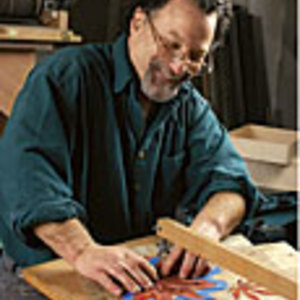
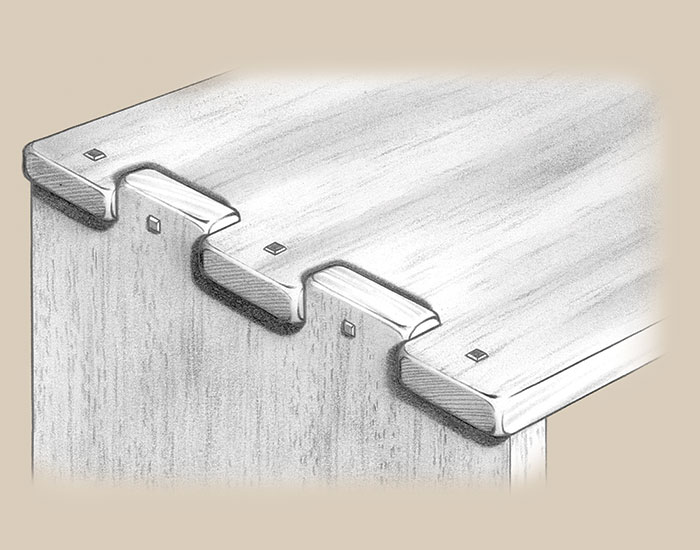
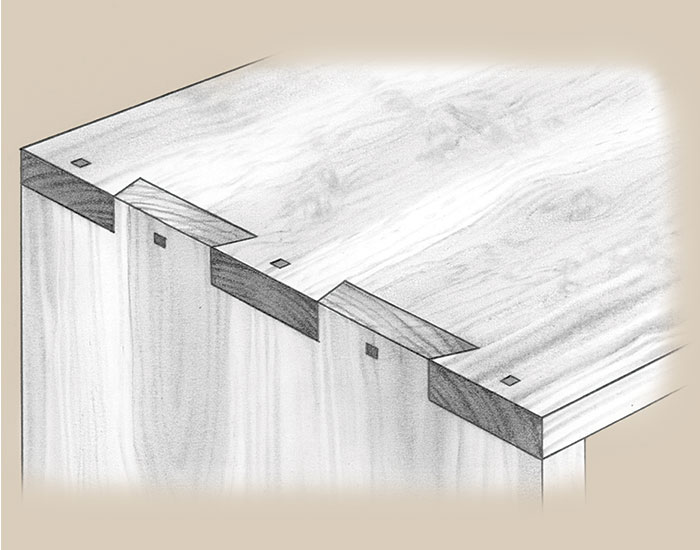






Log in or create an account to post a comment.
Sign up Log in